Barred spiral galaxy NGC 891
NGC 891 galaxy is a barred spiral galaxy about 30 million light-years away in the constellation Andromeda.
It was discovered by William Herschel October 6, 1784. This galaxy is a member of the NGC 1023 galaxies in the local supercluster.
The object is visible in small telescopes of moderate size, as an elongated patch of faint light spread over a band of dust.
This spiral galaxy extends about 100,000 light years in diameter and is distant about 30 million light years from our galaxy in the constellation Andromeda.
NGC 891 is very similar to our own galaxy, the Milky Way.
Like all spiral galaxies, it has a thin and flat galactic disk and a central bulge in the middle. In this picture we can see detail of thick veins of dust.
A distinction is also on the presentation by the edge of NGC 891 filament of dust that extend for hundreds of light years above and below the disk.
These dusts were likely ejected from the disk by supernova explosions or intense activity of star formation.
Small companion galaxies are also visible near the galactic disk.
Image: The barred spiral galaxy NGC 891
Credit: NASA, STScI, WikiSky
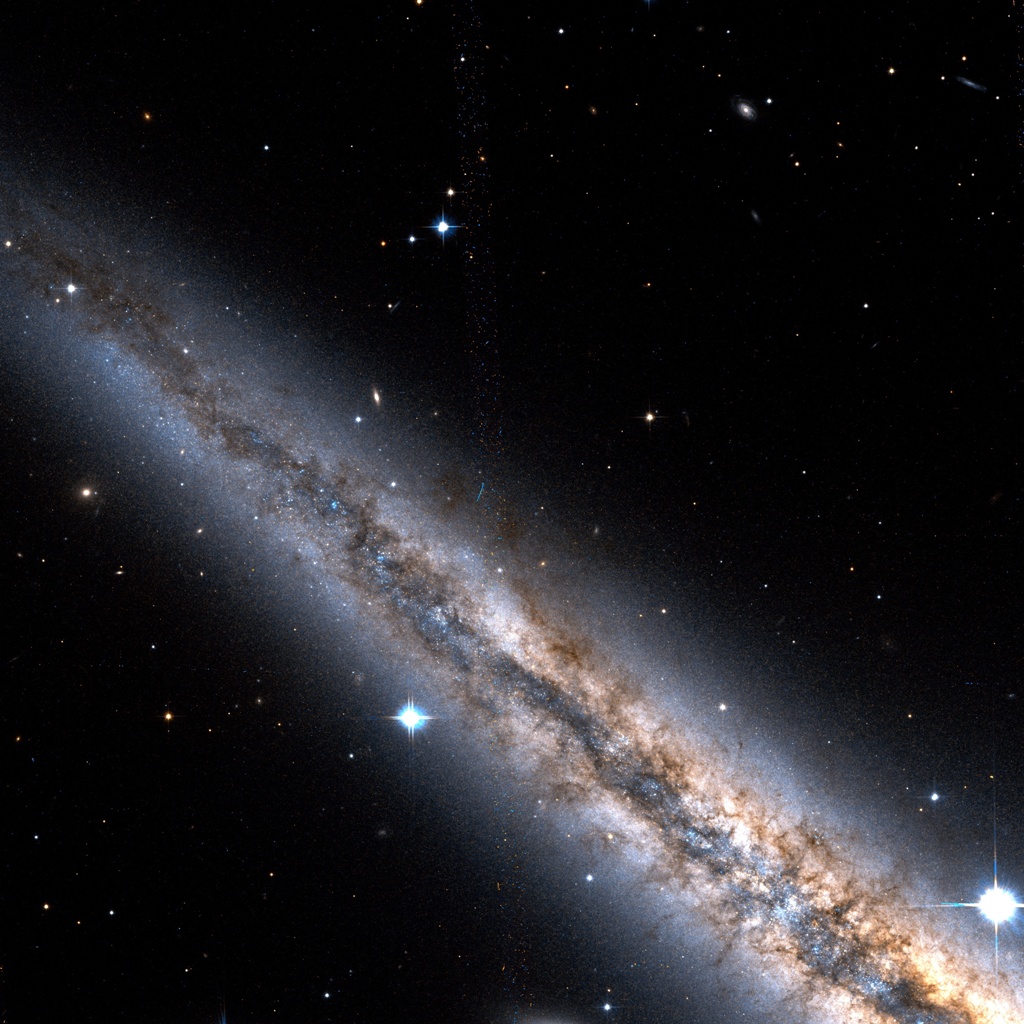
Spiral galaxy M51, or NGC 5194
The spiral nebula, M51 is a large galaxy as it is over 60,000 light years in diameter.
This is a pair of galaxies, distant 31 million light-years. Featuring a clear spiral structure and also cataloged as NGC 5194, M51 is a member of a well known duo of interacting galaxies, spiral arms sweeping the companion galaxy NGC 5195.
This composite image combines contrasts dramatically enhanced images of M51 obtained with the 1.2-m telescope of Calar Alto Observatory.
The data include long exposures through a hydrogen-alpha filter that focuses on emissions of atomic hydrogen.
The hydrogen emission regions in the typical reddish color are called HII regions, regions where star formation is intense and located mainly along the spiral arms of M51.
This composite image also shows areas of hydrogen emission in the weak structures extending beyond NGC 5195, near upper of the image.
The Whirlpool Galaxy or NGC 5194 Tourbillon 60 000 light years in diameter is also known as the M51.
It absorbs by NGC 5195, his companion at the top.
Image: The spiral galaxy M51, or NGC 5194.
Credit & Copyright: CAHA, Descubre Foundation, DSA, OAUV, Vicent Peris (OAUV / PixInsight), Jack Harvey (SSRO),
Steven Mazlin (SSRO), Carlos Sonnenstein (Valkanik), Juan Conejero (PixInsight).

Tadpole galaxy or Arp 188
What is the explanation of the long tail of the Tadpole galaxy?
This image recorded by the camera of the Hubble Space Telescope, we see distant galaxies in the background of the spiral galaxy Arp 188.
The Tadpole Galaxy is less than 420 million light-years away toward the northern constellation Draco.
Its tail is about 280,000 light years in length and contains massive blue star clusters.
It seems that a galaxy Arp 188 has crossed the Tadpole and stretched by gravitational attraction.
This meeting would have torn the stars, gas and dust in the spiral galaxy, forming the spectacular tail.
Like the tadpole, the Tadpole Galaxy is expected to lose its tail as it ages, the clusters of stars forming the tail when smaller satellites of this large spiral galaxy.
Image: The Tadpole galaxy or Arp 188.
Credit: H. Ford (JHU), M. Clampin (STScI), G. Hartig (STScI), G. Illingworth (UCO/Lick), ACS Science Team, ESA, NASA

Galaxy NGC 6872 and IC 4970
The galaxy NGC 6872 is a massive spiral galaxy at least 4 times larger than our Milky Way high.
It is over 400,000 light years in diameter and is located about 200 million light-years away in the constellation of the Peacock.
His arms are stretched by gravitational interactions, it has with the small neighboring galaxy, the galaxy IC 4970. NGC 6872 and IC 4970 are two interacting galaxies located 300 million light-years.
On the picture against this small galaxy is on the right just below NGC 6872.
Note also a fracture of the arm galaxy NGC 6872 seems attracted by the gravitational pull of IC 4970.
This beautiful image was taken by the telescope of 8 feet in diameter Gemini South in Chile.
The Gemini Observatory is an astronomical observatory consisting of two 8-meter telescopes, one for each hemisphere of the Earth.
The telescopes were funded by a consortium of institutions of the United States, the United Kingdom, Canada, Brazil, Argentina, Chile and Australia.
Image: NGC 6872 and IC 4970 are two interacting galaxies located 300 million light-years. NGC 6872 is a barred spiral galaxy (SBb) very large, and magnitude 11.6. IC 4970, smaller, is of type S0. Its gravitational interaction of the galactic arms of NGC 6872 can explain the broken form of the right.
Credit: Sydney Girls High School Astronomy Club, Travis Rector (Univ. Alaska), Ángel López-Sánchez (Australian Astronomical Obs./ Macquari.e. Univ.), Australian Gemini Office

Sleeping Beauty galaxy of M64
Messier 64 is the famous spiral galaxy also known as the Black Eye Galaxy of Sleeping Beauty.
The structure of dark dust hiding millions of stars located behind. Observations have shown that the gas regions outside of this spiral galaxy rotates in the opposite direction relative to the stars.
The inner part of about 3000 light years in radius, rubs along the outer edge of the disc, which rotates in the opposite direction and extends to 40 000 light years, at a speed of 300 km/s. Collisions between the gas inside and outside regions generate many hot blue stars and the nebulae show pink. The image was taken by the Hubble Space Telescope in 2001 and was published in 2004. The fascinating internal motions of M64, also referenced as NGC 4826, are interpreted as the result of a collision between a small and a large galaxy, the resulting mixture is not yet stabilized.
Image: Galaxy of Sleeping Beauty or the black eye galaxy or M64
Credit: NASA & Equipe Hubble Heritage (AURA/STScI), S. Smartt (IoA) & D. Richstone (U. Michigan) et al.

"The data available on this site may be used provided that the source is duly acknowledged."



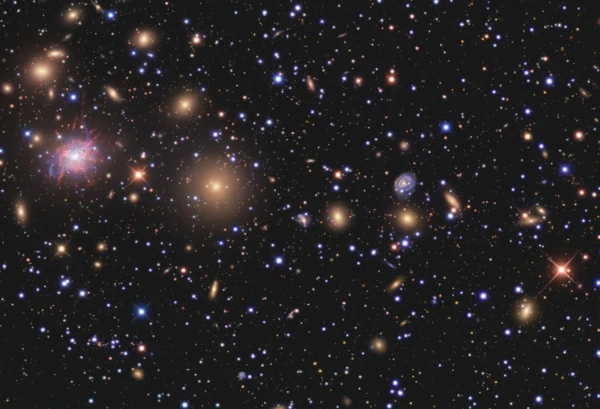 Why are Galaxies, Unlike Stars, So Close to Each Other?
Why are Galaxies, Unlike Stars, So Close to Each Other?  Galaxies
of the Local Group
Galaxies
of the Local Group  The hidden galaxy, one of Euclid's first images
The hidden galaxy, one of Euclid's first images  The Virgo Cluster spans approximately three Full Moons
The Virgo Cluster spans approximately three Full Moons 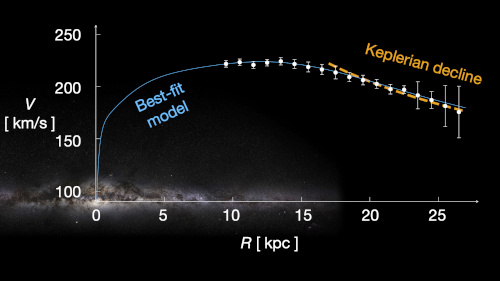 Where did the dark matter in our Galaxy go?
Where did the dark matter in our Galaxy go? 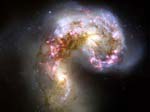 Merging galaxies and black holes
Merging galaxies and black holes  Mirages created by gravitational lenses
Mirages created by gravitational lenses  Mystery of the Big Bang, the problem of the horizon
Mystery of the Big Bang, the problem of the horizon 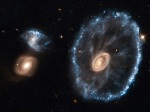 Cartwheel Galaxy Cosmic Event
Cartwheel Galaxy Cosmic Event 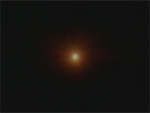 The first second of our history
The first second of our history 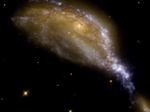 A small galaxy tears apart the large NGC 6745
A small galaxy tears apart the large NGC 6745 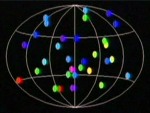 The mystery of gamma bursts
The mystery of gamma bursts 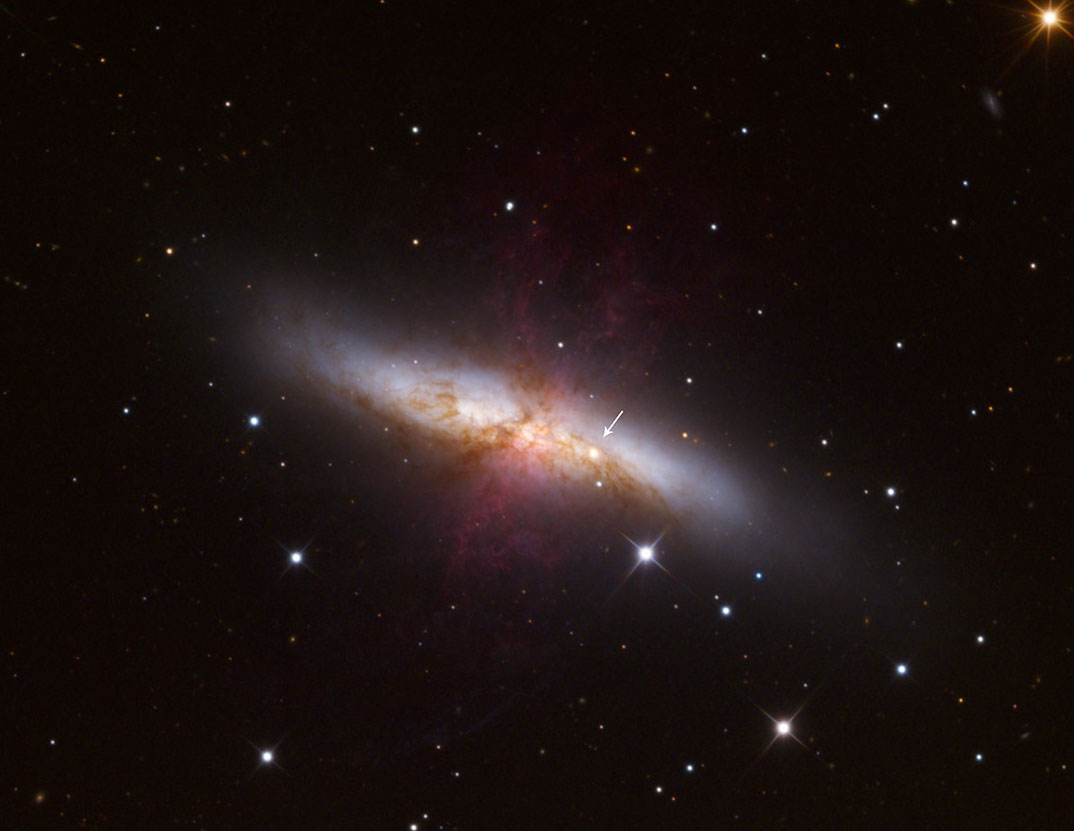 The Cigar Explosion
The Cigar Explosion 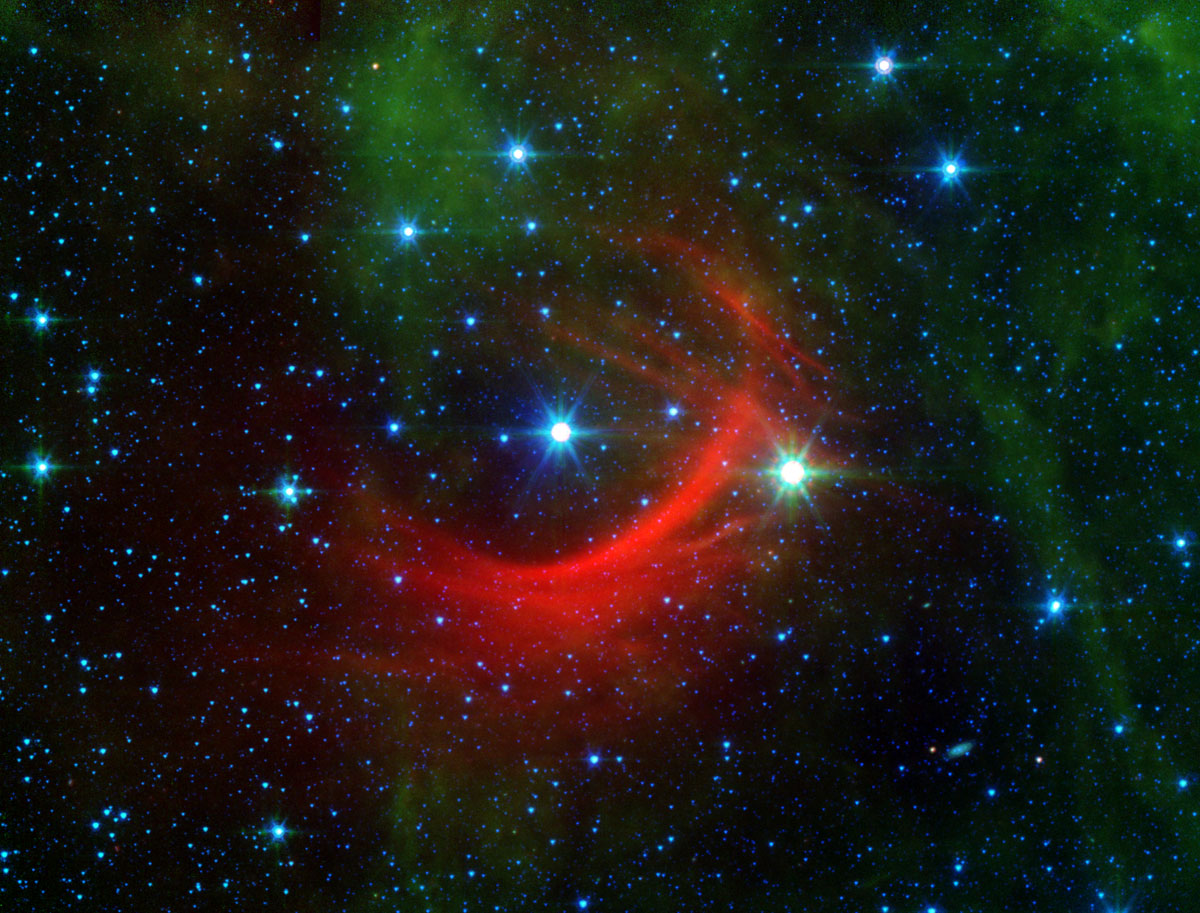 Shockwaves
Shockwaves
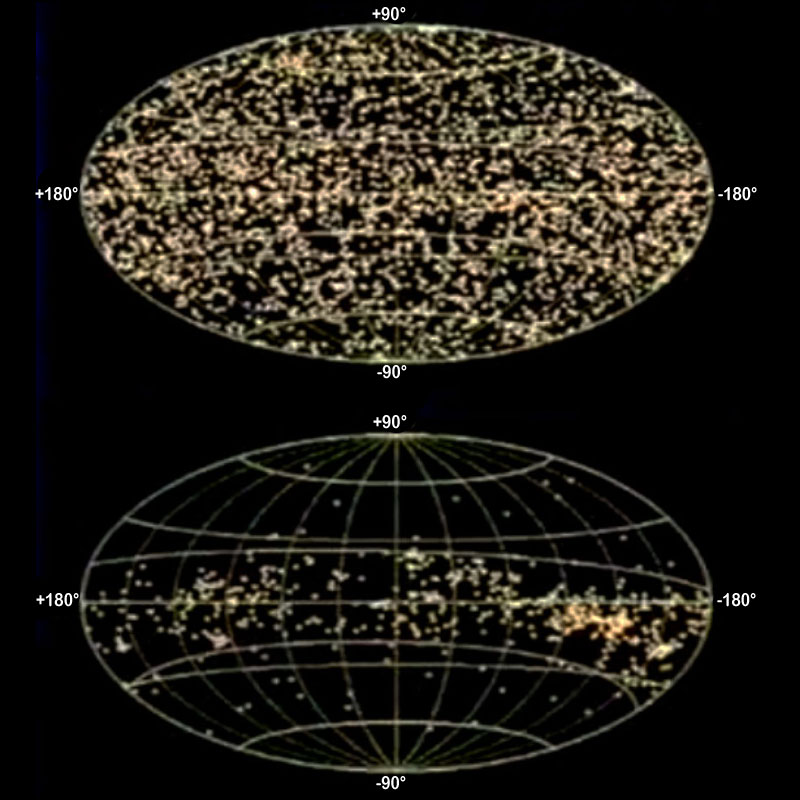 Gould's belt, a stellar fireworks display
Gould's belt, a stellar fireworks display 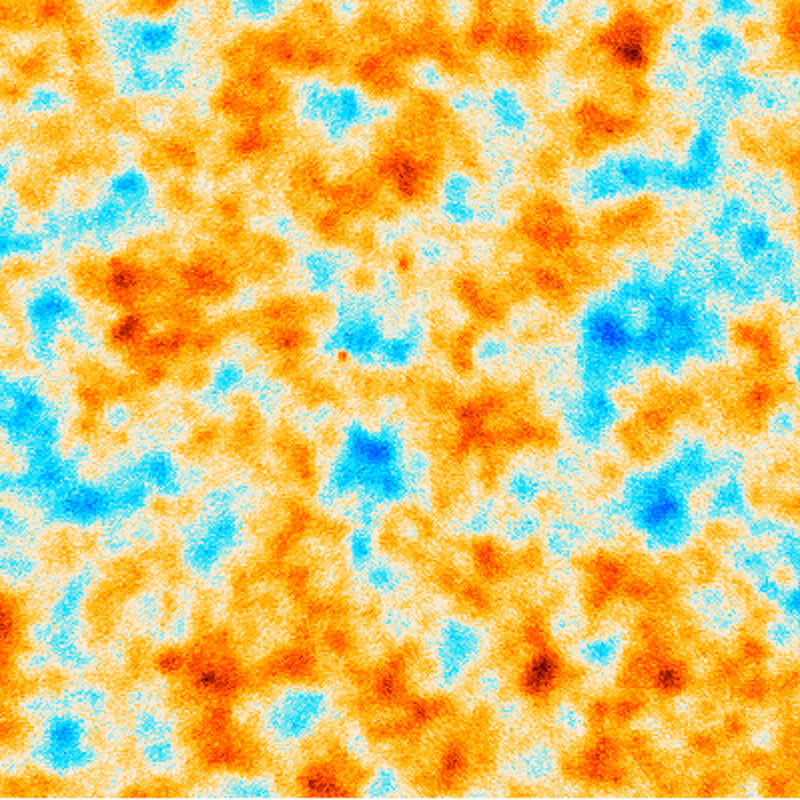 Recombination
in cosmology
Recombination
in cosmology 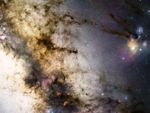 Journey to the center of our galaxy
Journey to the center of our galaxy 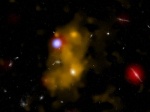 Lyman-alpha
bubbles
Lyman-alpha
bubbles 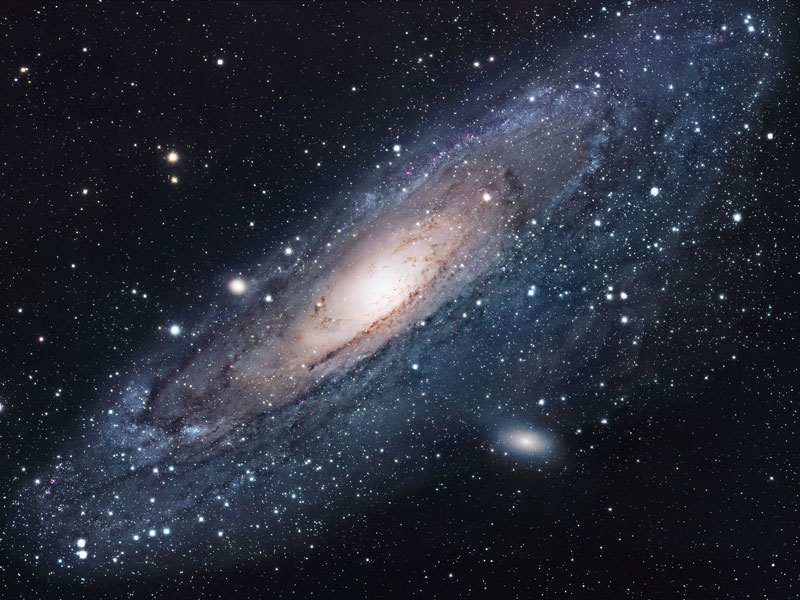 Andromeda in the ultraviolet
Andromeda in the ultraviolet  The most beautiful galaxy clusters
The most beautiful galaxy clusters 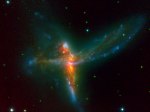 Tinkerbell merger of three galaxies
Tinkerbell merger of three galaxies  A gigantic black hole
A gigantic black hole 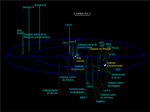 Enigma
of coplanar galaxies
Enigma
of coplanar galaxies 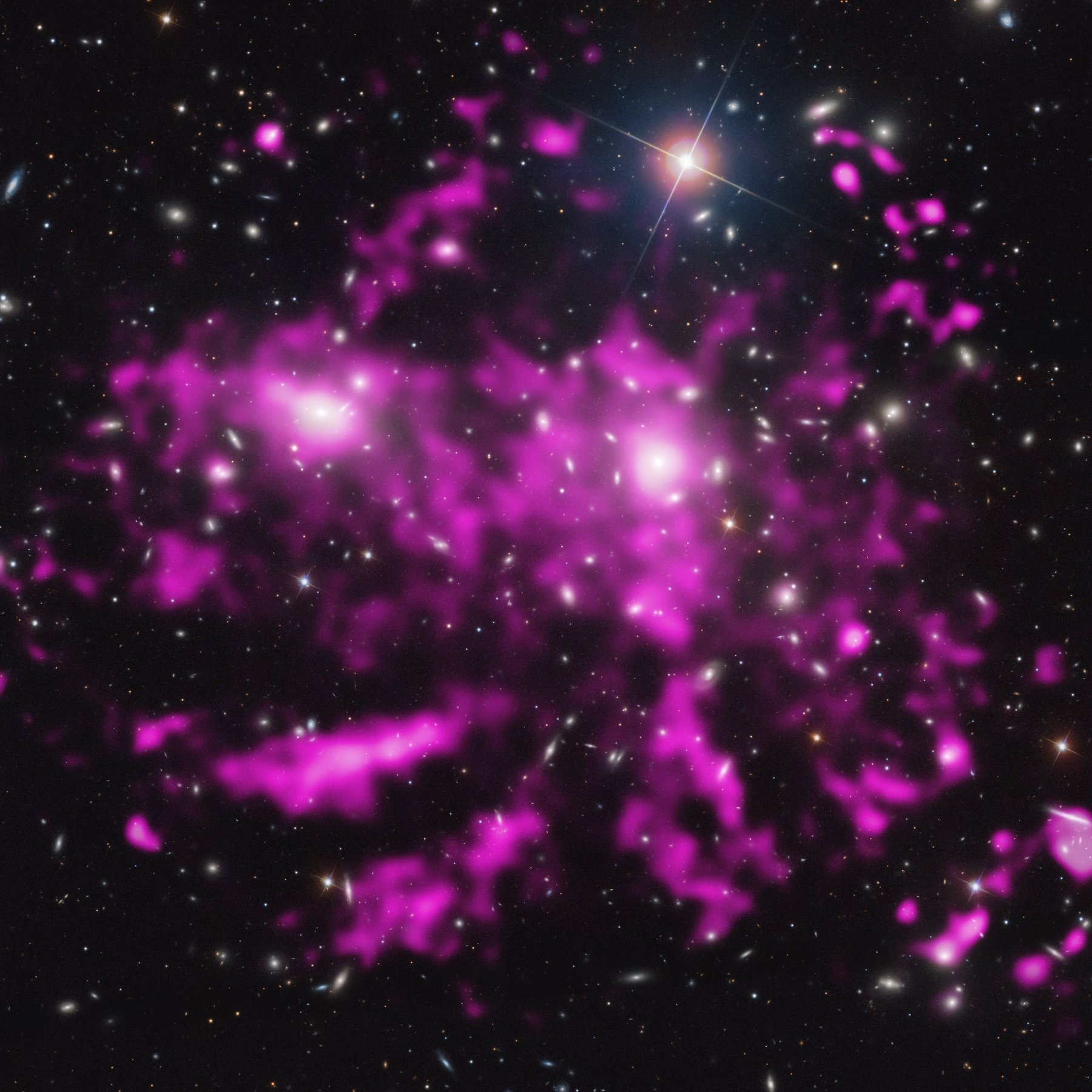 The cluster of galaxies Coma in its soup
The cluster of galaxies Coma in its soup 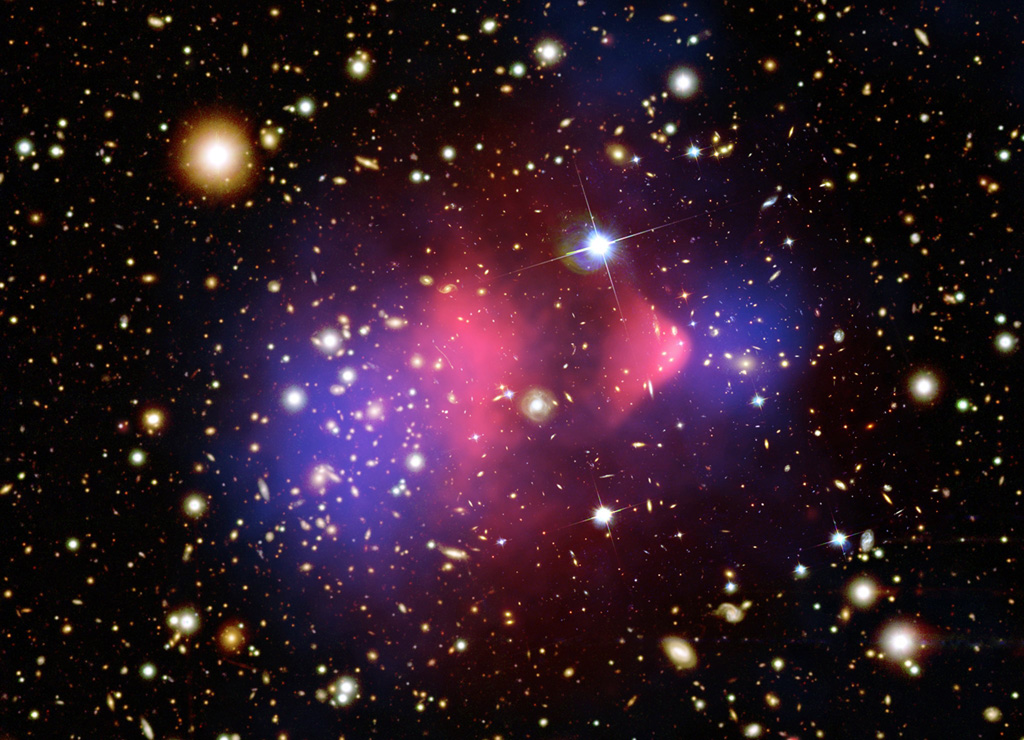 The cannonball, proof of dark matter
The cannonball, proof of dark matter 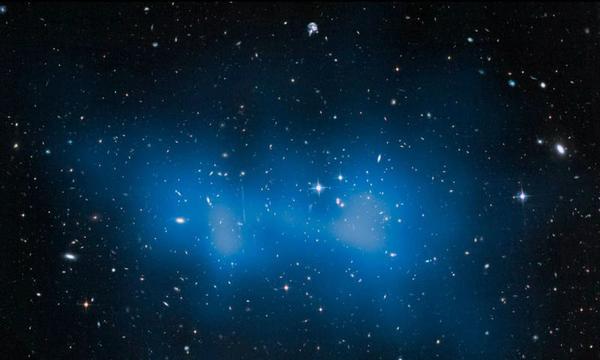 El Gordo galaxy cluster
El Gordo galaxy cluster 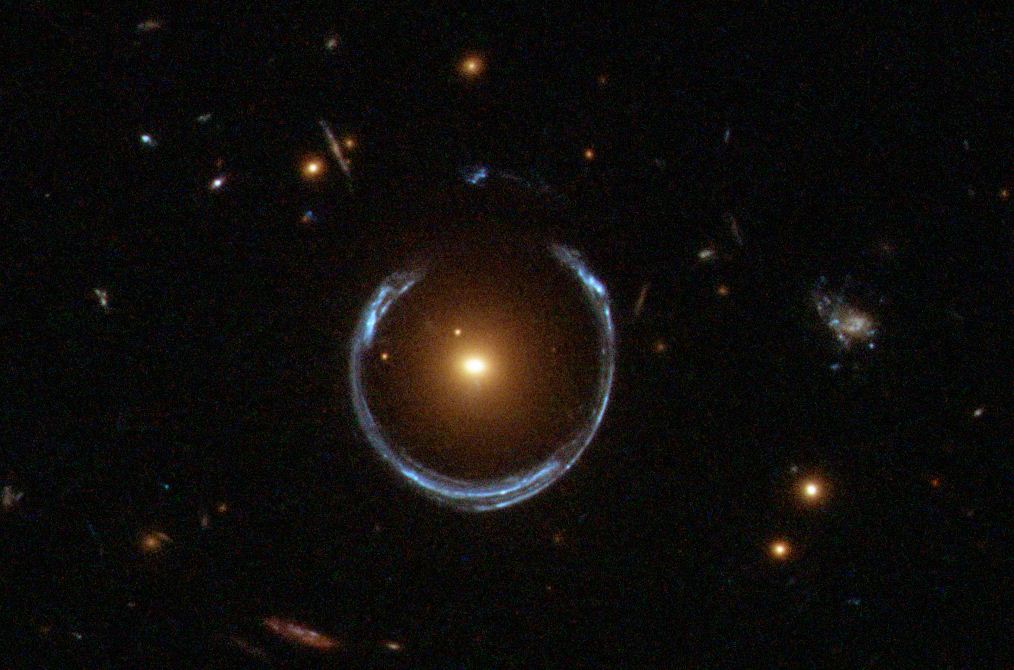 Einstein
ring and cross
Einstein
ring and cross  How to measure distances in the Universe?
How to measure distances in the Universe?  The Hubble sequence and types of galaxies
The Hubble sequence and types of galaxies 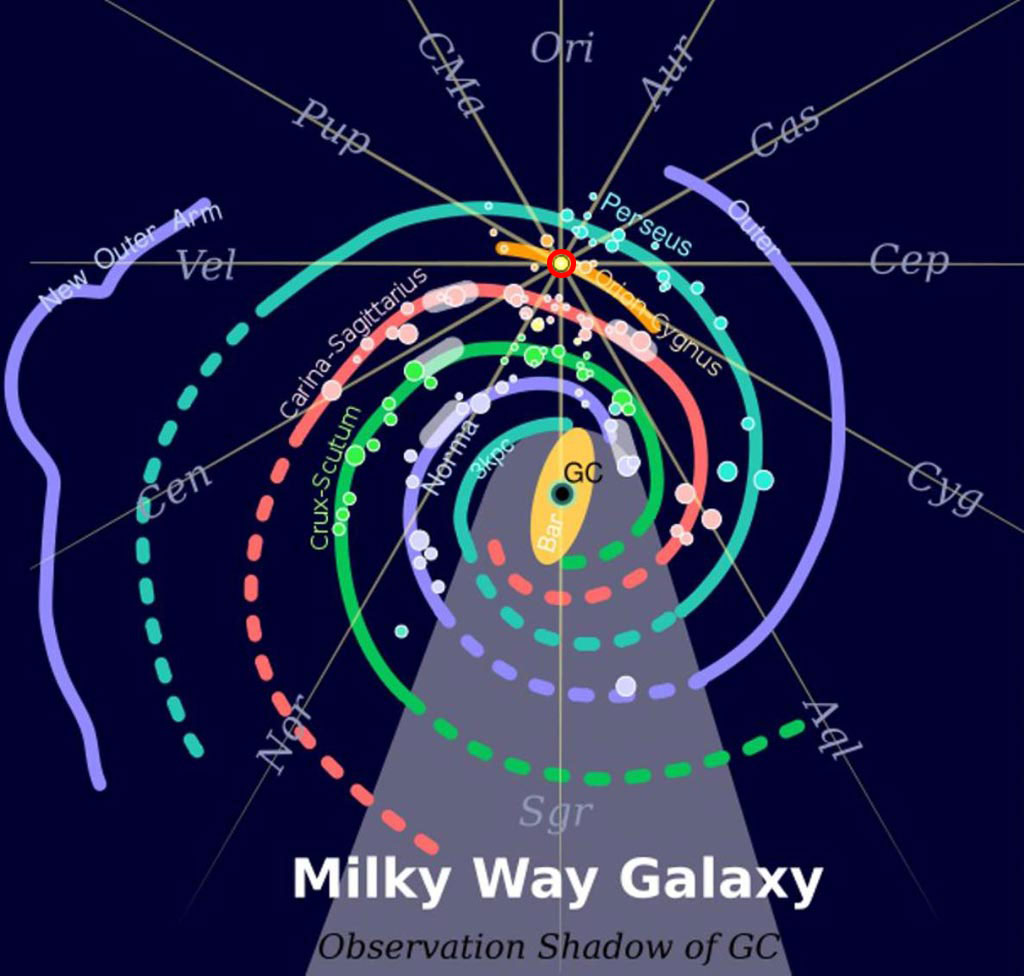 The spiral shape of the galactic arms
The spiral shape of the galactic arms 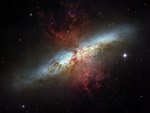 Even more stars, the Cigar galaxy
Even more stars, the Cigar galaxy 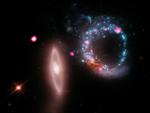 The
Universe of X-rays
The
Universe of X-rays 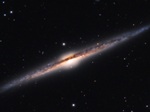 The most beautiful galaxies
The most beautiful galaxies 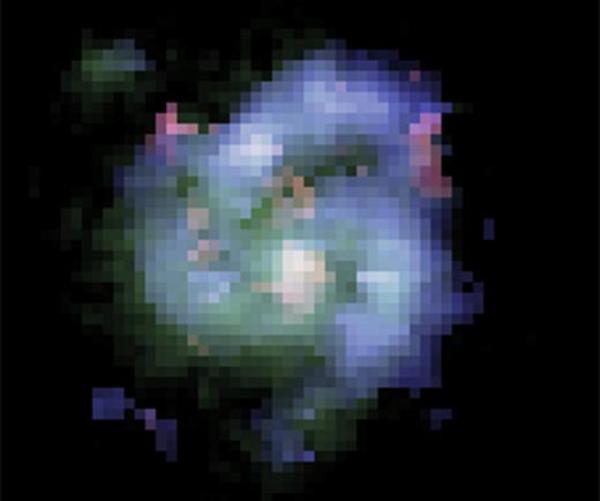 The oldest galaxies in the universe
The oldest galaxies in the universe 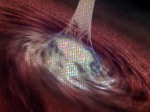 Quasars
the nuclei of galaxies
Quasars
the nuclei of galaxies  Sagittarius A black hole at the center of our Galaxy
Sagittarius A black hole at the center of our Galaxy 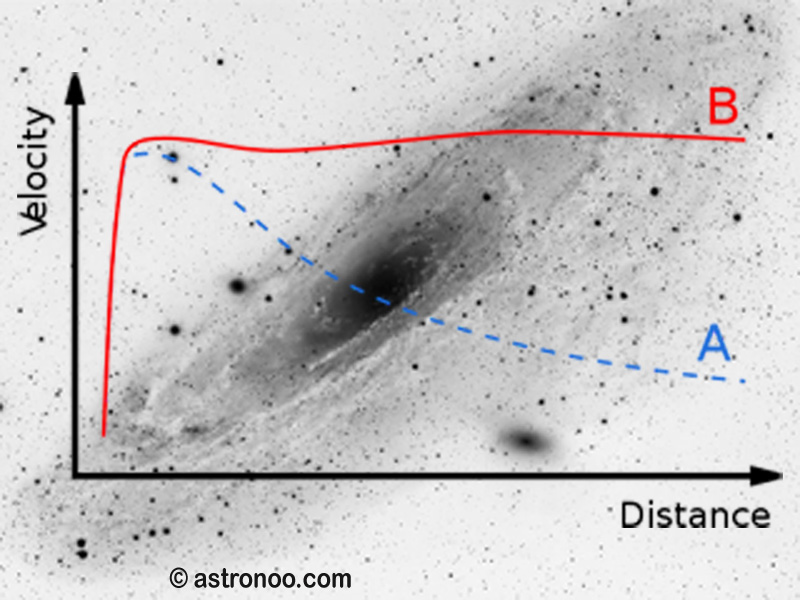 The MOND theory and its contradiction
The MOND theory and its contradiction 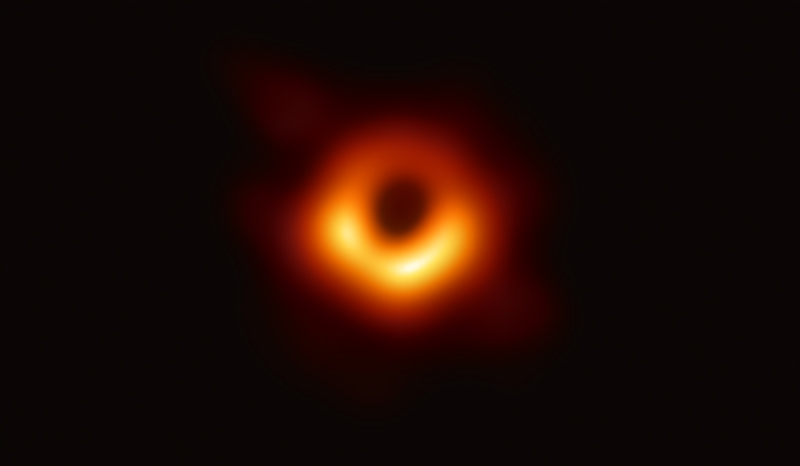 The first image of a black hole
The first image of a black hole  Central
area of the Milky Way
Central
area of the Milky Way 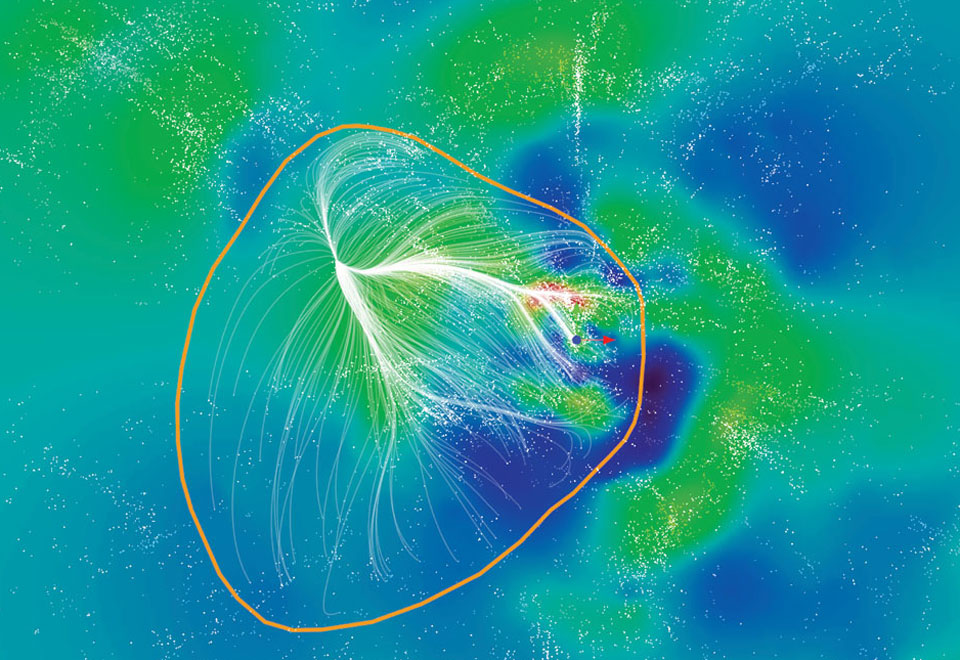 Laniakea, our supercluster of galaxies
Laniakea, our supercluster of galaxies